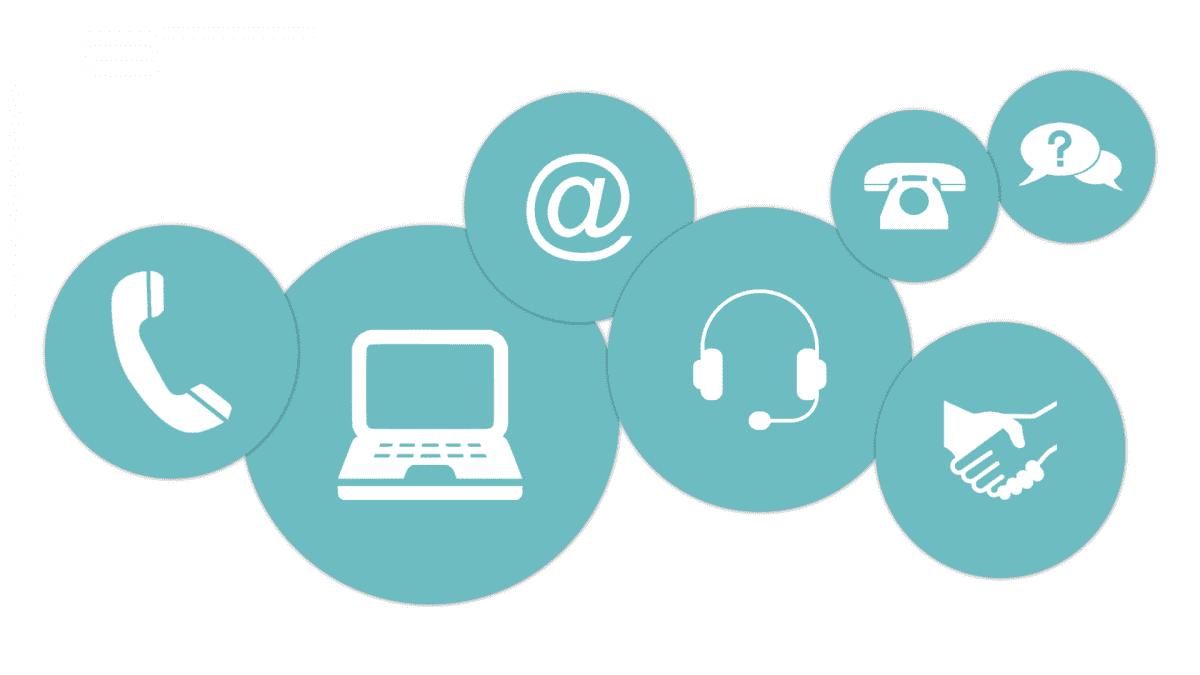
Consumers have more choices than ever before, and with just a few clicks, they can find a business that meets their exact needs. This abundance of options has made competition fiercer than ever—customers expect fast, seamless service, and they won’t hesitate to take their business elsewhere if you fall short.
In 2025, logistics planning isn’t just about moving goods from point A to point B—it’s about precision, efficiency, and adaptability. As supply chains grow more complex and consumer expectations continue to rise, businesses that fail to optimize their logistics risk being left behind.
This guide will walk you through the logistics planning process, best practices, key components, and emerging trends shaping the future of logistics. With a solid logistics strategy, your business can stay ahead of the competition and thrive in an evolving market.
Explore this article’s key sections quickly using the table of contents below:
- What is Logistics Planning?
- Key Benefits of Logistics Planning
- Biggest Logistics Planning Challenges
- Tools for Logistics Planning
- Current Trends in Logistics Planning
- Logistics Planning FAQs
What Is Logistics Planning?
Logistics planning is the strategic process of ensuring that the right quantity of goods moves through the supply chain efficiently—minimizing costs while maximizing speed, accuracy, and customer satisfaction. It encompasses every stage of the supply chain, from sourcing raw materials and manufacturing to warehousing, distribution, and final delivery to retailers or customers.
Why Is Logistics Planning Important?
Effective logistics planning is essential for maintaining profitability, efficiency, and customer loyalty. Every step in your supply chain must be carefully coordinated to ensure that products reach their destinations on time, without excess costs or delays. A well-structured logistics plan helps businesses avoid unnecessary expenses, optimize resources, and stay competitive in a demanding market.
On the other hand, poor logistics planning can lead to costly disruptions, delays, and dissatisfied customers. The consequences of a weak logistics strategy are easy to spot—and businesses that fail to adapt often struggle to recover.
Without proper logistics planning, you could:
- Run out of inventory
- Order too much of a product and have no space for it
- Have to pay extra to store overflow
- Leave customers waiting on packages that should have arrived days ago
- Waste time and money sending delivery drivers on inefficient routes
- Miss a change or situation that affects your supply chain
These are just a few examples of what could happen without well-designed logistics planning. There’s a reason they say failing to plan is planning to fail. While these issues might seem inconsequential on a small scale, for businesses, they could be dire.

Key Benefits of Effective Logistics Planning
Logistics planning offers a wide range of benefits for businesses. Now that we’ve explored the risks of poor logistics management, let’s take a closer look at how optimizing your logistics strategy can drive efficiency, reduce costs, and enhance customer satisfaction.
Benefits of Logistics Planning:
- Minimize overhead costs
- Faster delivery times
- Better supply chain visibility
- Enhanced customer experience and higher satisfaction
- More efficient collaboration with all partners in your supply chain
- Accurate demand forecasting and logistics forecasting
- Increased responsiveness to market changes and supply chain problems
- More sustainability in logistics
- Gain a competitive edge
Proper logistics planning is good for your business, your supply chain partners, your customers, and the environment.
What Are the Biggest Logistics Planning Challenges?
Like anything worth doing, logistics planning isn’t easy. Logistics operations management has its challenges. Let’s go over some of the most prominent logistics planning challenges.
Top 8 Logistics Planning Challenges:
- Complexity: Logistics planning is a complex web of suppliers, customers, 3PLs, warehouses, and more. Each element on its own is very complicated and requires careful planning.
- Time Constraints: Customers have increasingly high expectations for fast delivery. On top of that, time is money. Every minute you waste is money out of your pocket.
- Logistics Cost Management: Time isn’t the only factor in logistics costs. Ordering too much or too little, shipping delays, market changes, and more can all inflate costs.
- Regulatory Compliance: Government regulations in the US and abroad can affect your logistics operation. You have to factor them into your planning process to ensure you don’t get fined or worse.
- Supply Chain Visibility: Customers hate seeing “in transit” and other vague terms. They want to be notified about their order every step of the way and they want clear and specific explanations. Complete transparency also prevents miscommunication with supply chain partners.
- Customer Experience: Customers have so many options. If you don’t provide a good customer experience, they’ll find someone who will. A customer-centric approach is best.
- Workforce Management: Your supply chain only works because of the workers who make everything happen. Each step requires some amount of human intervention. These skilled workers are vital, but labor shortages and high turnover can negatively impact your business.
- Sustainability In Logistics: Sustainability is a necessity in today’s world. Aside from just being the right thing to do, ensuring sustainability in your logistics process saves you money, brings in customers, and helps you stay ahead of regulations.
Key Components of Logistics Planning
Before we dive into the trends and insights, it’s important to recognize the three pillars that every logistics plan requires: Inventory management, route optimization, and warehouse management.
Inventory Management
Effective inventory management, combined with accurate demand forecasting, is central to the efficiency of logistics planning. The goal is to achieve a balance between supply and demand, ensuring optimal stock levels at all times. This balance is important for minimizing waste and reducing storage costs, which can significantly impact a company’s bottom line.
Advanced forecasting models, using historical data and market analysis, allow for more precise predictions of customer demand. Armed with this knowledge, businesses can prepare inventory accordingly, avoiding both surplus and shortages. The integration of technology in inventory management, like RFID tagging, and cloud-based inventory systems, further enhances tracking and management efficiency.
Route Optimization
Route optimization is another critical component of logistics planning. The focus here is on minimizing delivery times and reducing fuel usage, which cuts costs and lowers the environmental impact of logistics operations.
Using GPS and AI technologies, companies can create dynamic routing strategies that adapt to real-time conditions like traffic, weather, and delivery schedules. With this level of optimization, companies have the most efficient use of transportation resources, leading to faster delivery times and happier customers.

Warehouse Management
The layout and management of warehouses and distribution centers are also important in logistics planning and efficiency. Implementing automated storage and retrieval systems (AS/RS) and optimizing space usage can dramatically improve the speed and accuracy of order fulfillment. Efficient warehouse management also involves using data analytics to forecast inventory needs and strategically position goods for faster processing.
Additionally, the adoption of warehouse management systems (WMS) streamlines operations by automating tasks such as inventory tracking, picking, and packing. These innovations lead to a more organized and efficient warehouse, taking the overall productivity of the logistics process to the next level.
How to Measure the Success of Your Logistics Plan
You can measure the success of your logistics plan by doing regular logistics audits. Check for inefficiencies, make improvements, and continue to iterate and improve your logistics process. You also need to use the right logistics performance metrics.
Picking the right KPIs requires knowing your business goals and picking the metrics that align with them. For example, if your goal is to reduce costs, use KPIs that focus on the financials. If you want to improve your delivery times, use average delivery time and on-time delivery rates.
Collecting and measuring data is only the first step. Using a logistics planning tool with supply chain analytics features like reporting, data insights, and logistics forecasting can help you understand that data and react correctly. The right logistics software can make or break a business’s logistics planning.
Essential Tools for Logistics Planning
There are plenty of logistics planning tools on the market to help you get it right. Logistics technology has advanced a lot in recent years. There are now cutting-edge logistics solutions for every part of the supply chain.
The best way to get the most out of them is to ensure each tool has the features you need and that they all work together. Having systems that integrate together is the best way to ensure total supply chain optimization.
Let’s go over the most vital software and features for successful logistics planning.
Essential Logistics Planning Tools:
- Automated Routing and Dispatch: Logistics software with automated routing and dispatch features can help with your transportation planning and make your last-mile delivery process more efficient.
- Real-Time Route Optimization: Route optimization software that uses real-time data to dynamically improve your delivery routes based on current traffic patterns, weather, road construction, detours, and more.
- Electronic Proof of Delivery (ePOD): Eliminate the need for physical paperwork to verify delivery. ePOD systems make the process faster, easier, and more eco-friendly.
- Warehouse Management Software: Warehouse efficiency is important for cost reduction, productivity, time management, distribution planning, and more.
- Inventory Control Features: Having the exact right amount of inventory is vital to avoid unnecessary costs and disappointed customers.
- Reverse Logistics: Reverse logistics is a painful but necessary process. Having the right logistics software to handle customer returns properly can be the difference between a loyal customer and a lost customer.
Current Trends in Logistics Planning
The logistics sector is currently undergoing a significant transformation, largely influenced by the rapid pace of technological advancements and the evolving preferences of consumers. This shift is characterized by an increasing adoption of automation, AI-driven processes, and a greater focus on eco-friendly approaches.
These factors are not only changing the way logistics operations are conducted but are also setting new standards for efficiency and sustainability in the industry. The integration of these modern techniques reflects a broader trend toward digitalization and environmental consciousness, signaling a new era in logistics management.
Today’s technological advancements, like AI, and the Internet of Things (IoT), are reshaping how logistics is planned and executed. AI’s capabilities in predictive analytics and decision-making are enhancing the accuracy and efficiency of supply chain management and operations.
Meanwhile, IoT technology is making improved tracking and management of goods possible by enabling real-time data collection and analysis. These innovations are streamlining logistics processes, reducing operational costs, and improving overall supply chain visibility. They’re also promoting an environment of continuous improvement and innovation, paving the way for more agile and responsive logistics strategies.
With these overarching themes in mind, let’s dive deeper into some upcoming trends in logistics planning.
Data-Driven Logistics Planning
Data analytics is increasingly becoming the cornerstone of effective logistics planning. Logistics is constantly evolving, and the ability to extract actionable insights from data is invaluable. Data analytics enables logistics managers to identify emerging trends, anticipate potential challenges, and develop solid strategies for effective operations.
By analyzing historical data, companies can predict future demand patterns, optimize inventory levels, and greatly improve customer satisfaction. Data analytics also helps in identifying pain points and bottlenecks in the supply chain so targeted improvements can be made. The integration of advanced analytics tools and techniques, like machine learning, and predictive modeling, further elevates the capacity to make informed, data-driven decisions.
The Importance of Data and Analytics in Logistics Planning
The use of real-time data in logistics planning marks a significant shift towards more agile and adaptive management practices. Access to real-time information allows companies to respond swiftly to unexpected changes in the supply chain, like sudden demand fluctuations, supply disruptions, or logistical challenges.
This immediacy allows logistics planners to make on-the-spot adjustments, ensuring the smooth flow of goods and minimizing delays. Real-time data tracking, made possible by technologies like IoT sensors and GPS tracking, provides a continuous stream of information on the status of shipments, inventory levels, and other critical logistics parameters.
Having such immediate and transparent access to data is vital for sustaining a supply chain that is both resilient and adaptable in the rapidly evolving business landscape of today. Instead of having a problem and asking what went wrong, you’ll be able to anticipate the problem or, at the very least, see it as it’s happening, to respond in the moment and avoid losing any time or money because of it.
Sustainability in Logistics Planning
Integrating sustainable practices into supply chain planning is a crucial aspect of modern logistics. It’s not just a matter of environmental responsibility; it also offers long-term economic benefits. Sustainable logistics practices include measures like reducing resource consumption, minimizing waste, and investing in renewable energy sources.
These practices contribute to a greener supply chain and can save companies money through the better use of resources. Companies that adopt eco-friendly practices also often see an enhanced brand image and increased customer loyalty. Consumers are increasingly favoring businesses that demonstrate environmental stewardship.
Minimizing the environmental footprint of logistics operations involves a multifaceted approach.
Key Strategies:
- Optimizing Transportation Routes: Using advanced routing software to minimize travel distances and reduce fuel consumption.
- Eco-Friendly Packaging: Adopting biodegradable or recyclable materials for packaging to reduce waste.
- Energy-Efficient Warehousing: Implementing practices such as LED lighting, solar panels, and energy-efficient heating and cooling systems in warehouses.
- Green Vehicle Technologies: Utilizing electric or hybrid vehicles for transportation to lower greenhouse gas emissions.
- Sustainable Material Handling: Employing equipment that is more energy-efficient and produces fewer emissions.
- Waste Reduction Programs: Implementing recycling programs and reducing packaging material to minimize waste generation.
By adopting these strategies, logistics operations can significantly reduce their environmental impact while also achieving greater operational efficiency. This dual benefit underscores the importance of sustainability as a core component of modern logistics planning.
Technological Integration
AI and machine learning are at the forefront of transforming logistics planning. These technologies provide much more than just data analysis. They bring predictive analytics to the table, which can foresee demand fluctuations and supply chain disruptions before they occur.
Automated decision-making, made possible by AI, helps in optimizing routes, managing inventory levels, and even aids in predictive maintenance of logistics infrastructure. This boosts operational efficiency, contributes to significant savings, and improves customer satisfaction. Machine learning algorithms continuously learn and improve from historical data, ensuring that logistics systems become even more intelligent and efficient over time.
Implementing sophisticated logistics planning software marks a major advancement in the management of supply chains. These software solutions integrate various elements of the supply chain, from inventory management to transportation and delivery management, into a cohesive, streamlined system. This integration allows for real-time visibility and control, enabling logistics managers to make more informed and timely decisions.
Advanced features like automated routing, demand forecasting, and resource allocation are important here. They contribute to a more responsive and flexible logistics operation. The adoption of such sophisticated software tools is necessary to achieve a competitive edge in today’s fast-paced market, as they bring a level of precision and efficiency that traditional methods can’t match.
Supply Chain Visibility
Transparency in the supply chain is a critical element for achieving effective logistics planning. It builds a foundation of trust and facilitates improved coordination among all parties involved in the supply chain. Customers want to see where their packages are at every step. Automatic update notifications can make a huge difference to them.
This transparency also helps identify areas for improvement. More visibility means you can see, measure, and improve every step. It boosts accountability and compliance as well, ensuring that every stakeholder, from suppliers to customers, is informed and engaged. In today’s complex and interconnected global supply chains, maintaining a high level of transparency is necessary for operational success and customer satisfaction.
Advanced tools such as RFID, GPS tracking, and cloud-based platforms are revolutionizing how goods are tracked and managed throughout the supply chain. These technologies provide:
- Real-time tracking and monitoring of goods, offering a clear view of their location and status at any given moment.
- Improved accuracy in inventory management, reducing errors and discrepancies.
- Enhanced communication between different segments of the supply chain, leading to better coordination and planning.
- Data analytics capabilities allow for the extraction of valuable insights from the tracked information, aiding in decision-making and strategy formulation.
When you use these technologies, your business can achieve a level of visibility that was previously unattainable. This visibility boosts the efficiency of the supply chain and plays a crucial role in responding to market demands and customer expectations in a timely and effective manner.
Resilience and Risk Management
Building resilient logistics networks is a complex, multi-step process that requires more than just diversification of suppliers, routes, and transportation modes. It’s an approach that guarantees continuity and reliability in the face of potential disruptions. This involves analyzing supply chain vulnerabilities and developing strategies to strengthen these areas.
Resilience in logistics also means maintaining a balance between efficiency and redundancy, ensuring that there are buffer capacities in place to handle unexpected events. Plus, it involves promoting strong relationships with suppliers and partners, creating a diverse network that’s also collaborative and adaptive.
These strategies work in unison to fortify a logistics network, enabling it to effectively endure and swiftly bounce back from diverse disruptions, whether they stem from natural disasters, economic shifts, or geopolitical occurrences.
Proactive planning and enacting contingency measures are critical elements for successful risk management within the logistics sector. This requires the ability to predict potential disruptions and the establishment of well-thought-out backup plans. Such planning involves regular audits to assess risk factors, monitor global and local events that could impact the supply chain, and have clear, actionable plans for different scenarios.
Continuous testing and updating of these plans are also required to ensure their effectiveness. Integrating technological solutions, like advanced analytics, and scenario-planning tools, can greatly enhance the capacity for proactive risk management. By adopting a proactive approach, logistics managers can significantly minimize the impact of disruptions, ensuring smoother and more reliable operations.
Regulatory Compliance
Navigating the complexities of both global and local regulations demands a comprehensive understanding and meticulous strategic planning. Logistics regulations are continually evolving, driven by factors like environmental concerns, safety standards, and international trade agreements. Companies must stay abreast of these changes to ensure they remain compliant.
This involves regularly consulting legal experts, attending industry seminars, and investing in compliance management systems. A proactive approach to understanding and adapting to these regulations mitigates the risk of legal penalties and positions a company as a responsible and trustworthy player in the market. It also helps in maintaining a smooth flow of operations across borders, essential in today’s interconnected global economy.
Compliance in logistics is integral to the seamless and effective operation of the supply chain. Compliance affects various aspects of logistics, from transportation and warehousing to customs clearance and documentation. Inadequate compliance can lead to significant disruptions, like delays, fines, and reputational damage. That makes integrating compliance checks into the logistics planning process an immediate need.
Conducting regular audits, training staff on regulatory changes, and collaborating closely with customs brokers and freight forwarders who are well-versed in regulatory requirements create a strong action plan. Remember, it’s always better to lead the way and go above and beyond the mandatory.
For example, if a resource you use is the subject of controversy, don’t wait for governments to require proof that yours is ethically and responsibly sourced. Be the first to voluntarily change your suppliers, procedures, and/or documentation. This will build trust, align your brand image with corporate responsibility, and avoid a last-minute scramble to change everything when new regulations come down.collaborating closely with customs brokers and freight forwarders who are well-versed in regulatory requirements create a strong action plan.
Want more industry insights?
Subscribe to our newsletter to receive weekly last mile logistics insights directly to your email inbox each week!
Future Outlook
The logistics industry is poised for significant transformations in the coming years, largely driven by continuous technological innovations. We can expect to see a surge in the adoption of advanced technologies like blockchain for enhanced security and transparency, and autonomous vehicles.
Sustainability will also take center stage, with more companies adopting green logistics practices to reduce their carbon footprint and meet increasing environmental regulations and customer demand for more eco-friendly companies. The integration of AI in logistics planning is expected to become more sophisticated, leading to even more efficient, predictive, and adaptive supply chain operations.
To stay competitive in the evolving world of logistics, it’s important to be prepared for both the challenges and opportunities that lie ahead.
- Adopt a Proactive Approach: Emphasize continuous learning and adaptability to new technologies and market trends.
- Invest in Training and Development: Implement programs to equip the workforce with skills necessary for handling emerging technologies.
- Foster a Culture of Innovation: Create an environment where new ideas and approaches are actively encouraged and tested.
- Build Strong Partnerships: Collaborate with technology providers and industry experts for insights and support in navigating future changes.
- Embrace Forward-Thinking: Cultivate adaptability and a forward-thinking mindset among logistics professionals to transform challenges into opportunities for growth and advancement.
Logistics Planning FAQs
Now, we’ll go over the answers to some frequently asked questions about logistics planning.
What Does a Logistics Planner Do?
A logistics planner maps out a strategy for moving goods through the supply chain to the end customer in the most efficient way possible.
What Are the Objectives of Logistics Planning?
The objectives of logistics planning are to move products through the supply chain in the most efficient way and to ensure that you never have less inventory than you need or more inventory than you need.
Just-in-time logistics is a way of having the exact right amount of supply right when you need it, so you never run out and you never pay to store more than you need.
What Are the 5 Ps of Logistics?
The 5 Ps of logistics are people, products, processes, partnerships, and performance.
The 5 Ps of Logistics:
- People: People are crucial to the logistics planning process. Goods need to be moved through the supply chain, and the workers make that happen. Having the right people at your side makes all the difference.
- Products: Products are what is being moved. They’re at the center of it all. Ensuring that you take the unique needs of the items into account to transport them safely and securely is vital.
- Processes: Each step of the supply chain is made up of several processes that must be completed correctly and quickly. Streamlining your processes is the best way to maximize efficiency.
- Partnerships: Along the way, there are other companies you need to help you meet your goals from suppliers and manufacturers to carriers and 3PLs and beyond. Transparency and collaboration will help you work together more efficiently to achieve your common goals.
- Performance: You can’t improve what you don’t measure. Using the right KPIs can help you track your logistics performance and make constant improvements.
Key Takeaways in Logistics Planning
Staying informed and adaptable is key. For logistics managers and those seeking to improve their logistics, understanding these aspects of logistics planning is essential. As the field continues to evolve, partnering with experienced and innovative logistics solutions providers like Elite EXTRA can be a real game-changer.
With their cutting-edge logistics software, Elite EXTRA offers comprehensive solutions that streamline supply chain operations, from advanced route optimization to real-time tracking and reporting. Their commitment to integrating the latest technological innovations ensures that businesses are equipped with the tools needed to respond effectively to the dynamic demands of the modern logistics landscape.
Reach out to Elite EXTRA for your logistics needs, and embark on a journey towards streamlined, efficient, and future-ready logistics operations.
Sources
https://ca.indeed.com/career-advice/career-development/logistic-planning
https://www.shopify.com/blog/logistics-planning
https://www.linkedin.com/advice/0/how-can-you-measure-logistics-efficiency-6kmje
https://www.linkedin.com/pulse/5-ps-logistics-adnovs-middle-east-nowie
https://hbr.org/2023/09/using-technology-to-improve-supply-chain-resilience
https://www.ttnews.com/articles/logistics-transform-ai
https://www.newequipment.com/industry-trends/article/21248269/how-realtime-data-can-optimize-your-supply-chain
https://www.manufacturing.net/supply-chain/blog/22883956/predicting-the-top-6-warehouse-management-trends-for-2024
https://hbr.org/2021/12/bringing-blockchain-iot-and-analytics-to-supply-chains
https://www.warehousingandfulfillment.com/ technology-resources/ai-in-logistics-exploring-the-latest-innovations-and-trends/







